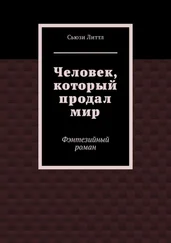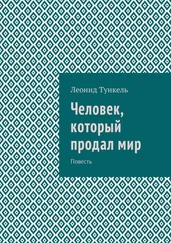Abu-Lughod, World System p. 18.
RT III pp. 565–566, 605–606; Ricci, Marco Polo pp. 16–17; Yule, Cathay III p. 49; J. Richard, Papaute et les missions pp. 145–146; Abu-Lughod, World System pp. 185–211.
Thomas T. Allsen, 'Mongolian Princes and their Merchant Partners, 1200–1260,' Asia Major, 3rd series 2 (1989) pp. 83–126.
McNeill, Plagues and Peoples pp. 93, 102–120, 134, 140–147.
Необычная ( лат .).
Owen Lattimore, 'Feudalism in History,' Past and Present 12 (1957) pp. 47–57.
Rachewiltz, Papal Envoys p. 65. For criticisrhs of 'nomadic feudalism' and indeed the Mongol system as in any way feudal see Bold, Nomadic Society pp. 21–24; Khazanov, Nomads and the Outside World pp. 132, 135, 139, 144, 159, 255.
Rachewiltz, Papal Envoys pp. 66–67; Vernadsky, Mongols and Russia pp. 118, 213, 339–341.
Lattimore, Inner Asian Frontiers pp. 61–65, 361–365.
Anderson, Passages from Antiquity p. 223.
Vernadsky, Mongols and Russia pp. 130–131.
Lattimore, Inner Asian Frontiers pp. 519–523.
Fletcher, 'The Mongols' p. 50.
See the outstanding analysis by Anderson, Passages from Antiquity pp. 218–225.
Almaz Khan, 'Chinggis Khan from Imperial Ancestor to Ethnic Hero,' in Harrell, Cultural Encounters pp. 248–277; P. L. W Sabloff, 'Genghis Khan, Father of Mongolian Democracy,' in Sabloff, Modern Mongolia pp. 225–251.
In his play Axel (1890). See Bourre, Villiers de L'Isle-Adam.
Armstrong et al, Francis of Assisi: Early Documents.
SHO pp. 93, 197–199; SHR pp. 43, 139–141.
A. Mostaert, 'A propos d'une priere au feu,' in Poppe, American Studies in Altaic Linguistics pp. 191–223; Heissig, Religions of Mongolia pp. 48–59.
E. Lot-Falck, 'A propos d'Atugan, deesse mongole de la terre,' Revue de I'Histoire des Religions 149 (1956) pp. 157–196; Yule & Cordier, Marco Polo I pp. 257–259; Heissig, Religions pp. 7, 76–84.
N. Poppe, 'Zum Feuerkultus bei den Mongolen,' Asia Minor 2 (1925) pp. 130–145 (at p. 141).
Rachewiltz, Commentary pp. 329–331; Heissig, Religions pp. 84–90.
Moule & Pelliot, Marco Polo I pp. 199–200; Baldick, Animal and Shaman pp. 95, 104, 108.
P. Pelliot, 'Notes sur le "Turkestan",' T'oung Pao 26 (1929) pp. 113–182 (at p. 133); Yule & Cordier, Marco Polo I p. 257; Moule & Pelliot, Marco Polo p. 257; Heissig, Religions pp. 102–110.
Moule & Pelliot, Marco Polo I p. 170.
Heissig, Religions pp. 6–7, 46.
Dawson, Mongol Mission p. 7.
Heissig, Religions p. 35.
Hutton, Shamans pp. 47–49; Caroline Humphrey, 'Shamanic Practices and the State in Northern Asia,' in Thomas & Humphrey, Shamanism pp. 191–228 (at p. 208); Humphrey & Onon, Shamans and Elders p. 51.
Humphrey, 'Shamanic Practices,' loc. cit. pp. 199–200.
Dawson, Mongol Mission p. 12; Jackson & Morgan, Rubruck p. 72; Jean-Paul Roux, 'Tangri: Essai sur le ciel-dieu des peuples altaiques,' Revue de I'Histoire des Religions 149 (1956) pp. 49–82, 197–230; 150 (1956) pp. 27–54, 173–212.
Jean-Paul Roux, 'La tolerance religieuse dans les empires turco-mongols,' Revue de I'Histoire des Religions 203 (1986) pp. 131–168 (at p. 164).
Caroline Humphrey, 'Theories of North Asian Shamanism,' in Gellner, Soviet and. Western Anthropology pp. 242–252.
Vitebsky, Shaman p. 74.
Vitebsky, Shaman pp. 56–73, 94–95.
Heissig, Religions pp. 17–19.
Vitebsky, Shaman pp. 25, 54–55, 81; Andrew Neher, 'A Physiological Explanation of Unusual Behavior in Ceremonies Involving Drums,' Human Biology 34 (1962) pp. 151–160.
Vitebsky, Shaman p. 22.
Hutton, Shamans p. 107; Heissig, Religions p. 20.
For the congruence of Mongol and Persian theology and theogony see Gumilev, Imaginary Kingdom pp. 267–269.
Jagchid & Hyer, Mongolia's Culture pp. 163–167.
Asimov & Bosworth, History of Civilizations iv part 2 pp. 65–66.
Heissig, Religions p. 7; Vitebsky, Shaman p. 135; Piers Vitebsky, 'Some Medieval European Views of Mongolian Shamanism,' Journal of the Anglo-Mongolian Society 1 (1974) pp. 24–42. See also Foltz, Religions of the Silk Road.
Denis Sinor claims that the title 'gur-khan' was much like Franco's 'Caudillo' and Hitler's 'Fiihrer': 'The Khitans and the Kara Khitans,' in Asimov & Bosworth, History of Civilizations iv part. I pp. 227–242 (at p. 235).
JB I pp. 354–361.
For the people who conquered the Qara-Khanids see E. A. Davidovich, 'The Karakhanids,' in Asimov & Bosworth, History of Civilizations, iv part 1 pp. 119–144; Peter B. Golden, 'The Karakhanids and Early Islam,' in Sinor, Early Inner Asia pp. 343–370.
Hill, Jade Gate to Rome.
For the vassal status see Beckwith, Empires of the Silk Road pp. 148–159; Stein, Ancient Khotan pp. 123–133.
Grousset, Empire pp. 159–167; Golden, Turkic Peoples; Tetley, Ghaznavid and Seljuk Turks.
Biran, Qara Khitai pp. 41–44.
Biran, Qara Khitai pp. 146–160 for full details on all aspects of the Qara Khitai army.
For Prester John see Beckingham & Hamilton, Prester John; Silverberg, Realm of Prester John; Hawting, Muslims, Mongols and Crusaders; Charles E. Nowell, 'The Historical Prester John,' Speculum 28 (1953) pp. 435–445.
Bretschneider, Mediaeval Researches I pp. 208–235.
For another view of Yelu see Thiebaud, Personnages marquants.
For Almaliq see Yule, Cathay and the Way Thither II pp. 288, 321, 388; Bretschneider, Mediaeval Researches I p. 224; II p. 33.
Biran, Qara Khitai pp. 133–135.
Biran, Qara Khitai p. 136.
Biran, Qara Khitai pp. 93–131, 146–147.
P. D. Buell, 'Sino-Khitan Administration in Mongol Bukhara,' Journal of Asiatic History 13 (1979) рр. 121–151; D. O. Morgan, 'Who Ran the Mongol Empire?' Journal of the Royal Asiatic Society (1982) pp. 124–136.
Читать дальше
Конец ознакомительного отрывка
Купить книгу

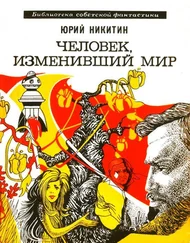

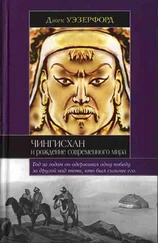
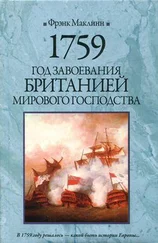

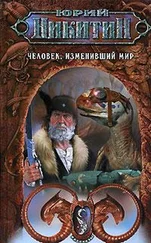
![Ксения Чепикова - Человек, научивший мир читать [История Великой информационной революции]](/books/388624/kseniya-chepikova-chelovek-nauchivshij-mir-chitat-ist-thumb.webp)
